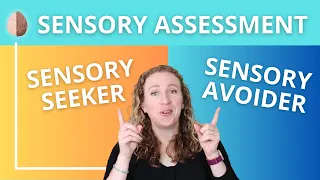This article will show you how to turn off the fight flight freeze response: anxiety skills #4.
I’d like to do a quick introduction into grounding activities. Being grounded means that you are in your body, you’re feeling your emotions and you’re aware of your present moment experience.
It also means that you’re feeling responsible for your safety and well-being. Grounding is an important therapeutic approach for managing anxiety, flashbacks, symptoms of post traumatic stress disorder and for improving your mental health.
How to Turn off the Fight/Flight/Freeze Response
Grounding strengthens your parasympathetic response. This is your body’s natural ability to return to calm.
This parasympathetic response counteracts the fight, flight or freeze response. PTSD and other anxiety disorders are disordered in their essence because you’re feeling like you’re in danger when you’re actually safe.
So your body’s having this danger response, this fight flight freeze response when you’re present moment experience is actually safe and that’s one reason why they are disordered.
Anxiety is often about worries about the future- what might happen. And depression is often about discouragement about the past.
And both of these can be counteracted with an increase in our ability to be here in the present moment.
Most of the time our present moment is a safe and secure environment. If it’s not we need to leave. So we need to create a safe and secure environment in our present moment.
But grounding activities help us activate that safe feeling in our brain by reminding ourselves that here in the present moment we are safe.
When we’re grounded and calm were able to work through emotions and memories in a healthy way.
Our body has a natural ability to resolve trauma or to work through emotions, but when we’re panicked or in our fight flight freeze danger response our brain shuts down those abilities because it thinks that our survival is at stake.
We can train ourselves to trigger this calming response by practicing grounding activities.
It’s important to practice these exercises over and over again so that they become habitual and we can draw on them in moments of stress or anxiety.
The Bottom-Up Approach
Many of the grounding activities that I’m going to teach you use your body as a way to create that sense of calm. So, these are physiological grounding skills.
This is called a bottom-up approach. Bottom-up meaning we go from the body to the brain instead of from the brain to itself and this makes sense because most of us aren’t able to think ourselves calm.
Like if you’re stressed out and you say “Don’t be anxious! Don’t be anxious!” that like never works. We can never actually tell ourselves to calm down by just forcing it from the top down.
That’s partly because our brain, when it feels threatened, it reacts at a very animalistic level. It’s using this deep part of our brain in the limbic system and the brainstem to react impulsively or instinctively to danger.
So, this makes a lot of sense. This is a really functional reaction. So, if a tiger jumps out at you you’re not going to be using your thinking part of your brain to be like “Hmm I wonder what I should do with this?” Your body’s gonna naturally and instinctively gonna run away.
So, it’s gonna have this physiological reaction this fight flight freeze response. It turns up your heart rate and it turns up your breathing rate.
Since we can’t access those deeper survival parts of our brain with our thoughts the best way to access that calm is through our body.
So, this is called a bottom-up approach to grounding. Our five senses anchor us to our body and our surroundings.
Using this bottom-up approach is a much more effective way to treat anxiety and stress than trying to simply change how we think.
And by creating that physiological calm, we’re able to lay the foundation for future cognitive work.
Create Physiological Calm
Many of these activities focus on our breathing and that’s because our breathing is something that happens both automatically and we have some degree of control over. So, that can help trigger that change in the limbic system that we need to create that physiological calm.
Grounding exercises help connect us to our body and help us reassert that sense of self-control and they reorient us to the safe context that we’re actually in in the present moment.
One of the ways that we gain confidence in our ability to use these grounding exercises is by doing a check-in before and after the exercise. And one way to do that is to do a quick scale.
So, before you do a grounding exercise scale your anxiety on a scale from zero to ten. And then do your grounding activity and then just check in with yourself again afterwards and put yourself again on the scale from zero to ten.
Now it’s not necessary for you to decrease your anxiety every time. Sometimes a grounding activity is just about increasing your awareness and your contact with the present moment.
But if you do these consistently, you will notice a gradual pattern of decreasing your anxiety little by little.
We need to be able to notice these small victories because they can add up to large gains over time.
Another way you can look at the effects of these grounding activities is to ask yourself these questions before and after: What are you noticing in your body?
What are you noticing with your breath? What’s happening with your feelings?
What’s happening with your heart? And what’s happening with your thoughts?
During these grounding activities, if at any point you need to take a break that’s okay. You can just pause the activity and then come back to it later.
Practice, Practice, Practice
When you’re initially learning these grounding exercises, the best way to practice is when you’re in a place that’s quiet, peaceful, and calm.
Don’t wait until you’re stressed out or in a chaotic environment to try them. And again it’s important to practice these activities every day for a few weeks before trying to practice them in a stressful environment.
The more you practice them, the more habitual and instinctual they’ll become and you can actually train yourself to calm your body down with just a thought or a word.
As you get better and better at grounding, you’ll increase your confidence and ability to create that physiological calm even when you’re in a stressful situation. And you can gradually use your skills in more and more difficult situations to maintain that sense of calm that we all need to feel safe and happy.
Check out the Grounding Skills for Anxiety course below.




